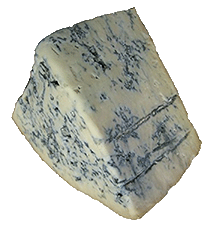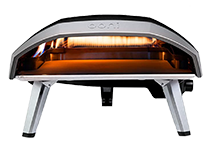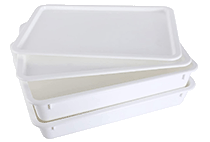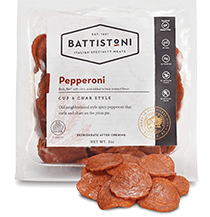Blue cheese on pizza is a classic pizza topping in Italy, and it’s making its way into American pizzerias. Blue cheese has an intense flavor and distinct smell. When combined with other toppings, it adds a flavor all its own.
Key Takeaways:
- Blue cheese is a versatile and healthy cheese with high calcium content and a compound called spermidine that helps protect against heart disease.
- Blue cheese can be used in a variety of ways in the kitchen, including crumbled on salads, made into a creamy sauce for steak, or added to soups and burgers.
- Blue cheese on pizza is a simple and delicious way to add a unique flavor to homemade pizza, and there are many different toppings that pair well with blue cheese, including caramelized onions, steak, artichokes, bacon, buffalo chicken, pears, and walnuts.
Table of Contents

What is Blue Cheese?
Blue cheese is the generic name for the ultimate stinky gourmet cheese. You have probably seen it in the grocery store. It’s tucked away near the other wedges of imported cheese. It’s a white cheese with colorful blue veins running through it. Blue cheese can be made from cow, goat, or sheep’s milk.
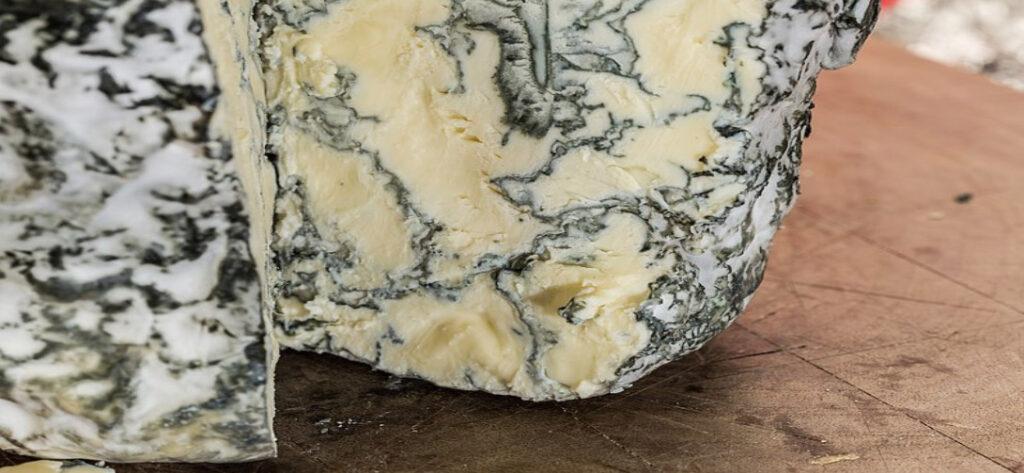
The blue veins are actually cultures of the mold Penicillium. This mold is different than the fuzzy green mold that you find on forgotten produce in the back of your fridge. That fuzzy green mold on your tomatoes produces toxins and is not safe to eat. But the mold from Penicillium does not produce toxins and is safe to eat. This mold is responsible for the strong smell and taste of blue cheese.
Where Does it Come From?
The legend goes that a shepherd was eating ewe’s cheese and bread in the countryside, and he was distracted by beautiful young women. He left his lunch to follow her, and when he returned months later, his leftovers were growing a blue mold. And according to folklore, that is how blue cheese was discovered. Science has since debunked the old tale.
There are several different types of blue cheese, and they can range from creamy to crumbly. Some have a sharper salty taste, and some lean toward a milder flavor. In the supermarket or specialty shop, you will find a variety of blue cheeses. They are sold as wedges and pre-made crumbles. Depending on the type, the price range can vary quite a bit. The two most common types are Gorgonzola and Roquefort.
Roquefort

This French blue cheese is thought to be the oldest form of blue cheese. It is made with sheep’s milk and comes from the south of France. It was originally aged in the limestone cliffs of the region. It has a complex sharp flavor. In the U.S., Roquefort has been mainly consumed in a popular salad dressing.
Gorgonzola
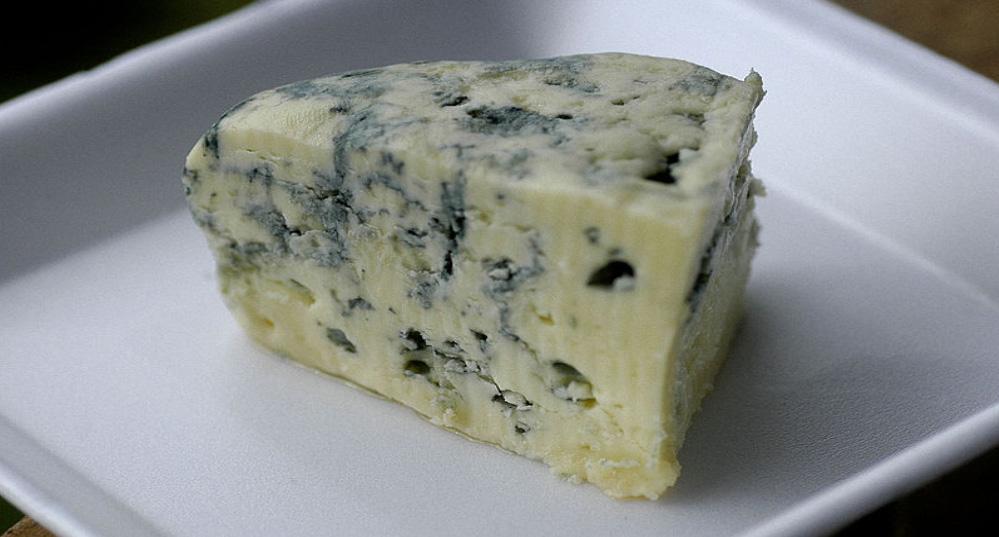
Gorgonzola is an Italian version of blue cheese that is made from cow’s milk. It comes from the Piedmont and Lombardy regions. It’s soft, creamy, and mild. Gorgonzola pizza is simply a game changer.
Health Benefits of Blue Cheese
Blue cheese is considered a healthy cheese due to its high calcium content. High calcium makes it excellent for fighting osteoporosis. In addition, blue cheese helps protect against heart disease. It has a compound called spermidine which is thought to protect the cardiovascular system. It’s a good source of protein too.
How to Use Blue Cheese in the Kitchen
Blue cheese is commonly used crumbled on salads or made into a creamy sauce to put on steak. It’s a great addition to a burger and crumbles well to thicken up soups and add a creamy texture. It compliments nuts and fruits and is a staple in charcuterie boards.
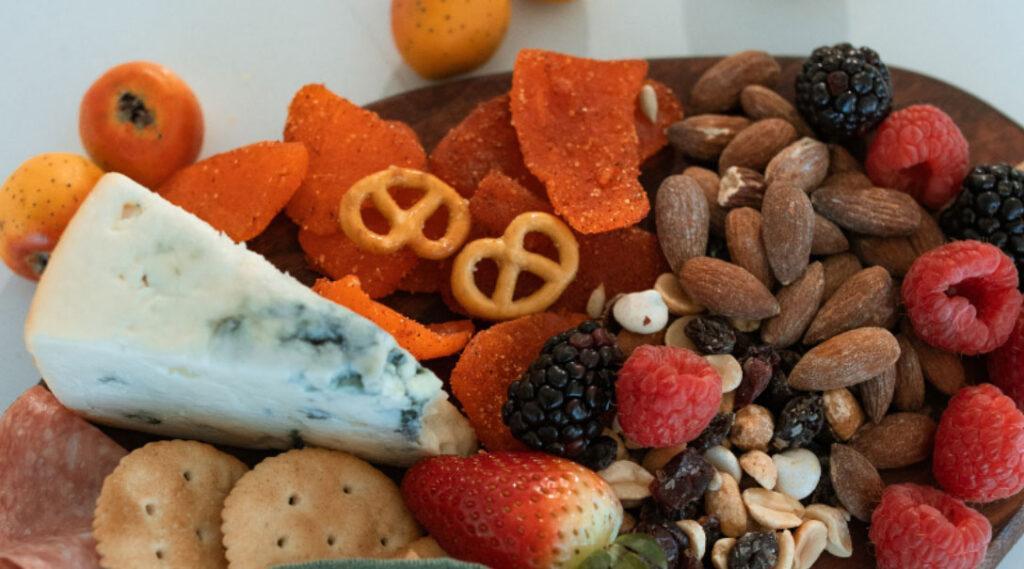
How to Use Blue Cheese on Pizza
Adding blue cheese on pizza is a simple way to add some pizzaz to your homemade creations. And combined with the right toppings, it makes an unforgettable pizza. Here are five delicious blue cheese on pizza recipes with this pungent cheese.
Blue Cheese and Caramelized Onions Pizza
Sauté onions on low heat for 15 or 20 minutes, stirring occasionally. Stirring keeps the onions soft and translucent. Add two tablespoons of brown sugar and two tablespoons of balsamic vinegar. Keep stirring them on low. Then, add sliced mushrooms and continue to cook on low.
The onions should be sticky and caramelized. Let cool. Then, add your red sauce and mozzarella. Add caramelized onion and mushroom mixture and top with a generous amount of blue cheese crumbles.
Pro Tip: Don’t let the onions burn. Caramelizing is a slow process, but stay close to the kitchen because you will need to start over if they burn.
Blue Cheese and Steak Pizza
Sauté thinly sliced beef strips with sliced mushrooms in a bit of oil with a sprinkle of salt for 3-4 minutes until the steak is cooked. I like to use skirt steak or sirloin cut very thin. Then, in a separate pan, cook some sliced white onions for a few minutes.
Add half a cup of heavy whipping cream and one-fourth a cup of blue cheese crumbles to the onions. Cook for 3-4 minutes. Let cool. Now take your pizza crust and add the creamy sauce.
Next, spread the beef and mushrooms evenly on the crust. Sprinkle with a bit of parsley and cook to perfection.
Blue Cheese, Artichoke, and Bacon Pizza
In a sauté pan, cook six strips of bacon. Don’t make them too crispy. Think chewy bacon. Set aside. Chop half a cup of artichoke hearts. When the bacon has cooled, roughly chop it.
Add a red sauce to the pizza crust and a small amount of mozzarella. Then, add chopped artichoke pieces, bacon, and sprinkle with blue cheese crumbles.
Blue Cheese and Buffalo Chicken
Make your favorite buffalo chicken sauce and marinate the chicken pieces. Cook the chicken and let cool. Then add the cooked seasoned chicken to the pizza with blue cheese crumbled.
The lazy chef version of this is to season cooked chicken pieces with your favorite hot sauce instead of making a buffalo sauce. Both are delicious. The tang of the chicken fits perfectly with the creamy blue cheese.
Blue Cheese, Pear, Walnut, and Honey
This recipe is unique. The sweet crunch of the pear and creaminess of the cheese with crunchy walnuts is a delight. Start by whisking two teaspoons of olive oil and two teaspoons of honey. This is the sauce that you will add to the pizza crust. Then, sprinkle a little mozzarella. Next, place thinly sliced pears.
You can use Anjou or Bartlett. We recommend using what’s in season. Add the sliced pears evenly. Then, add chopped walnuts and a handful or two of crumbled blue cheese. You can add a little drizzle of honey before serving.
I hope you like these five different ways to eat blue cheese on pizza. If you haven’t tried blue cheese or never tried it on pizza, you are in for a treat. Tell us, what’s your favorite way to use blue cheese on pizza?
Frequently Asked Questions
What is the name of blue cheese pizza?
There is no specific name for blue cheese pizza, as it is simply pizza topped with blue cheese. However, some pizzerias may have their own unique names for blue cheese pizza, depending on the toppings and sauces used.
For example, a pizzeria may offer a “Blue Cheese and Bacon Pizza” or a “Blue Cheese and Steak Pizza.” Ultimately, the name of blue cheese pizza will vary depending on the establishment and the specific recipe being used.
Quattro formaggi, a pizza you’ll often find in Italian-style pizzeria, usually combines a blue cheese, a soft or creamy cheese, and a hard cheese like parmesan. Thus, four cheeses.
Is blue cheese good on pepperoni pizza?
While blue cheese may not be a traditional topping for pepperoni pizza, it can certainly be a delicious addition for those who enjoy the pungent flavor and creamy texture of blue cheese.
The saltiness of the pepperoni and the sharpness of the blue cheese can complement each other well, creating a bold and flavorful pizza. However, those who are not fans of blue cheese may find the combination overpowering, and may prefer to stick with more traditional toppings like sausage, mushrooms, and onions.
What other toppings can be used with blue cheese pizza?
There are many toppings that pair well with blue cheese pizza, including those that add sweetness, saltiness, or crunch to balance out the strong flavor of the cheese. Some popular toppings for blue cheese pizza include caramelized onions, pears, walnuts, bacon, and buffalo chicken.
These toppings can add a variety of flavors and textures to the pizza, creating a well-rounded and satisfying meal. Additionally, blue cheese pairs well with a variety of sauces, including red sauce, white sauce, and even barbecue sauce, allowing for endless customization and experimentation in the kitchen.
Does anything pair well with blue cheese pizza?
Yes, there are many foods and drinks that pair well with blue cheese pizza. One popular pairing is a bold red wine, such as a Cabernet Sauvignon or a Syrah. The tannins in the wine can help cut through the richness of the blue cheese, while the fruitiness can complement the sweetness of toppings like caramelized onions and pears. For those who prefer beer, a hoppy IPA or a rich stout can be a good choice, as the bitterness can balance out the creaminess of the cheese.
In terms of side dishes, a simple green salad with a tangy vinaigrette can be a refreshing accompaniment to blue cheese pizza. The acidity of the dressing can help cut through the richness of the cheese, while the greens can provide a fresh contrast to the hot, cheesy pizza. Additionally, roasted vegetables like Brussels sprouts or sweet potatoes can be a hearty and flavorful side dish, adding a variety of textures and flavors to the meal.
Overall, the key to pairing foods with blue cheese pizza is to look for flavors and textures that complement or balance out the strong flavor of the cheese. Whether it’s a bold red wine, a crisp salad, or a hearty side dish, there are many options to choose from that can enhance the dining experience and make the pizza even more enjoyable.
What is blue cheese called in Italy?
In Italy, blue cheese is literally known as “formaggio blu” which translates directly in English. However, there are also two specific types of blue cheese that are named after the regions where they are produced, such as Gorgonzola and Roquefort.
Gorgonzola is an Italian blue cheese that is made from cow’s milk and is named after the town of Gorgonzola in the Lombardy region of Italy.
Roquefort, on the other hand, is a French blue cheese that is made from sheep’s milk and is named after the village of Roquefort-sur-Soulzon in the Aveyron region of France.
Despite their different names and origins, both Gorgonzola and Roquefort are beloved blue cheeses that are enjoyed around the world.
Is blue cheese considered a high temp cheese?
Blue cheese is not typically classified as a high-temperature cheese. High-temperature cheeses are those that can withstand heat without completely melting, allowing them to maintain their shape and texture when cooked or heated. Examples of high-temperature cheeses include mozzarella and cheddar.
Blue cheese, on the other hand, is a type of cheese characterized by the presence of blue or green veins of mold. It has a crumbly texture and is known for its strong and distinctive flavor. Blue cheese is usually added to dishes after cooking or used as a topping, as heating it at high temperatures can cause it to melt and lose its characteristic texture.
If you’re looking for a cheese that can withstand high temperatures and maintain its structure when heated, you may want to consider other options like mozzarella, provolone, or cheddar, but there are ways to make specialized blue cheese to withstand higher temps.

